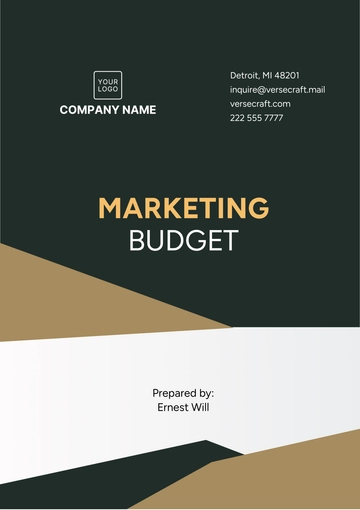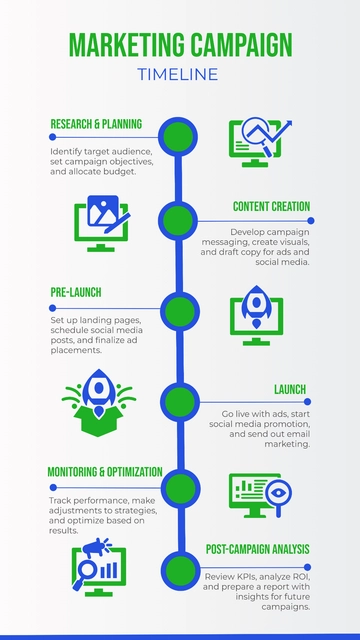Free Marketing Product Market Feasibility Study

I. Executive Summary
In this Marketing Brand Curriculum, designed for [Your Company Name], we present a comprehensive guide to help marketing professionals navigate the intricate world of branding. Our curriculum covers essential topics such as brand strategy, identity development, customer engagement, and compliance with US marketing standards. With inputs from [Your Name], this curriculum equips you with the knowledge and tools needed to build and maintain strong, legally compliant brands. Explore the sections below for in-depth insights and actionable strategies. For any inquiries or assistance, contact us at [Your Company Email] or visit our website at [Your Company Website].
II. Introduction
Welcome to the Marketing Brand Curriculum. In this comprehensive guide, we delve into the art and science of branding within the context of US marketing regulations and standards. As marketing professionals, you understand the pivotal role branding plays in shaping consumer perceptions and driving business success. Through this curriculum, we aim to provide actionable insights, strategies, and best practices to help you navigate the intricacies of branding. Whether you're a seasoned marketer or just starting your career, this curriculum will empower you to craft compelling brand stories that resonate with your target audience. Feel free to reach out to us at [Your Company Email] for any assistance or inquiries. Let's embark on this branding journey together.
III. Market Analysis
Understanding your market is a fundamental step in effective brand management. In this section, we explore the intricacies of market analysis, crucial for [Your Company Name].
A comprehensive market analysis involves defining your target market, analyzing demographics, psychographics, and behavior patterns of potential customers. Size, growth trends, and market segmentation must be examined to identify opportunities.
In the US market, consumer preferences and trends can vary significantly across regions. Stay informed about regional distinctions, competitive landscapes, and cultural influences to tailor your brand strategy accordingly.
Furthermore, consider factors such as market saturation, barriers to entry, and the competitive intensity. Analyze your competitors' strengths and weaknesses to position your brand effectively.
Remember, a well-informed strategy grounded in market analysis is key to building a brand that resonates with your target audience and complies with US marketing standards.
IV. Competitive Analysis
Competitive analysis is a vital component of effective brand management that empowers marketing professionals to make informed decisions. It involves researching and evaluating competitors to gain insights into their strengths, weaknesses, strategies, and market positioning. Here, we break down of a comprehensive competitive analysis:
|
|
V. Product Description
A compelling product description is the linchpin of successful marketing and sales. It serves as the bridge between your product and potential customers, conveying its value, benefits, and uniqueness. A well-crafted description captures attention, answers questions, and persuades buyers to take action. It establishes trust and provides essential information, making it a critical tool in influencing purchasing decisions. In essence, a product description can make the difference between a sale and a missed opportunity, making it an indispensable element of effective branding and marketing efforts.
VI. Technical Feasibility
Technical feasibility assessment is pivotal to ensure that your proposed product can be developed, manufactured, and delivered successfully. It involves evaluating the technical aspects, resources, and requirements:
Technical Requirements: Detail the technical specifications, hardware, software, and infrastructure needed for product development and production.
Resource Availability: Assess the availability of skilled labor, equipment, and technology needed for the project.
Prototyping and Testing: Explain the process for creating prototypes and conducting testing.
Materials and Suppliers: List required materials, their sources, and suppliers.
Production Capacity: Determine the production capacity and scalability of your manufacturing process.
Quality Control: Outline quality control procedures to ensure the product meets standards and specifications.
Risk Analysis: Identify technical risks, such as technological obsolescence, software bugs, or production delays.
VII. Operational Feasibility
Operational feasibility assesses whether your organization has the capacity and resources to implement and sustain the proposed product or service effectively. Here are key sub-sections to explore in your operational feasibility analysis:
|
|
VIII. Financial Feasibility
In the pursuit of assessing the viability of our project, it is essential to delve into its financial dimensions. This section offers a comprehensive financial feasibility analysis.
To facilitate a clear understanding of our projections, we have included a visual representation of revenue, cost breakdowns, and profit margins over a one-year period. The accompanying chart visually illustrates these crucial financial aspects, aiding in the evaluation of our project's financial sustainability.
IX. Marketing Strategy
The marketing strategy is the cornerstone of your brand's success. This section outlines the plan to connect your product or service with your target audience effectively. It encompasses market research, target audience identification, positioning, messaging, and channel selection.
Here is a list of marketing strategies that can help you organize and address the various aspects of your marketing strategy effectively:
Market Research and Analysis
Target Audience Segmentation
Brand Positioning
Messaging and Value Proposition
Marketing Channels Selection
Content Strategy
Marketing Campaigns
Budget Allocation
X. Regulatory and Legal Considerations
Navigating the complex landscape of regulatory and legal requirements is paramount in maintaining a successful and compliant marketing strategy.
Here are the most important regulatory and legal considerations in marketing:
Advertising Regulation: Adhering to truth-in-advertising laws and FTC guidelines is paramount. Ensure that all marketing materials, including claims, endorsements, and testimonials, are accurate and not deceptive.
Privacy and Data Protection: Compliance with data protection laws, such as GDPR and CCPA, is essential. Obtain proper consent for collecting and using personal data, and safeguard customer privacy.
Email Marketing Compliance: Comply with the CAN-SPAM Act when conducting email marketing campaigns. This includes providing clear opt-in and opt-out options and ensuring that your email content meets regulatory standards.
XI. Risk Analysis
Risk analysis is a critical phase in strategic planning, focusing on identifying and mitigating potential obstacles and uncertainties in marketing efforts. By systematically assessing market volatility, competition, regulatory changes, and crises, brands can develop strategies and contingency plans to ensure stability and resilience in the ever-evolving US market.
XII. Conclusion
We emphasize the integral role of meticulous planning and strategic foresight. This comprehensive guide equips marketing professionals with the knowledge and tools needed to navigate the dynamic US market successfully. From market feasibility to risk analysis, and ethical compliance, every facet of branding and marketing is covered. By adhering to legal standards, embracing innovation, and staying true to ethical principles, your brand can not only thrive but also leave a lasting positive impact on customers and the marketplace.
- 100% Customizable, free editor
- Access 1 Million+ Templates, photo’s & graphics
- Download or share as a template
- Click and replace photos, graphics, text, backgrounds
- Resize, crop, AI write & more
- Access advanced editor
Our Marketing Product Market Feasibility Study Template is a versatile tool designed for marketing professionals. This comprehensive template simplifies the process of assessing market feasibility, enabling you to make informed decisions with ease. It covers essential sections, including market analysis, competitive research, and risk assessment, ensuring your marketing initiatives align with industry standards and best practices. Streamline your market feasibility studies and drive strategic success with this invaluable resource.
You may also like
- Marketing Google Slide
- Marketing Letter
- Marketing Quotation
- Marketing Report
- Marketing Strategic Plan
- Marketing Plan
- Marketing Proposal
- Marketing Flyer
- Marketing Presentation
- Real Estate Marketing Plan
- Marketing Contract
- Marketing Agreement
- Marketing Resume
- Marketing Checklist
- Marketing Brochure
- Marketing Banner
- Marketing Schedule
- Marketing Vector
- Marketing Logo
- Marketing Chart
- Marketing Campaign Plan
- Marketing Budget
- Marketing Postcard
- Marketing Poster
- Marketing Facebook Post
- Marketing Instagram Post
- Marketing Newsletter
- Marketing Infographic





























